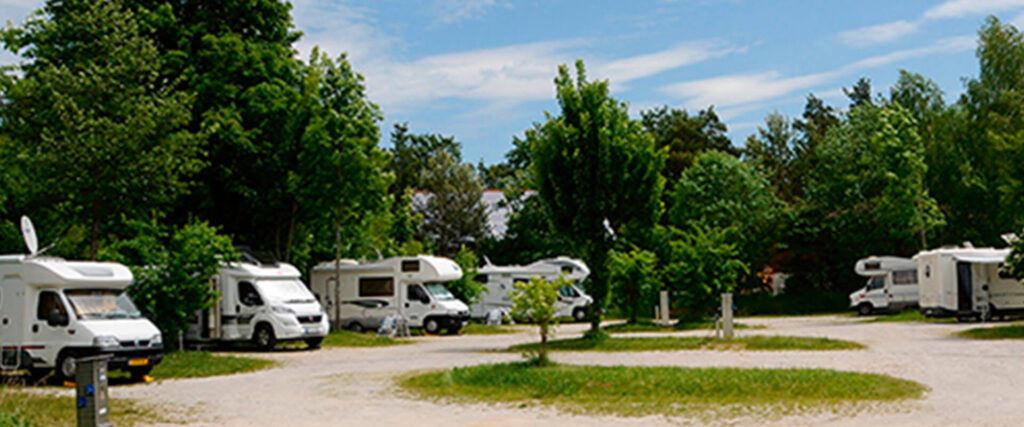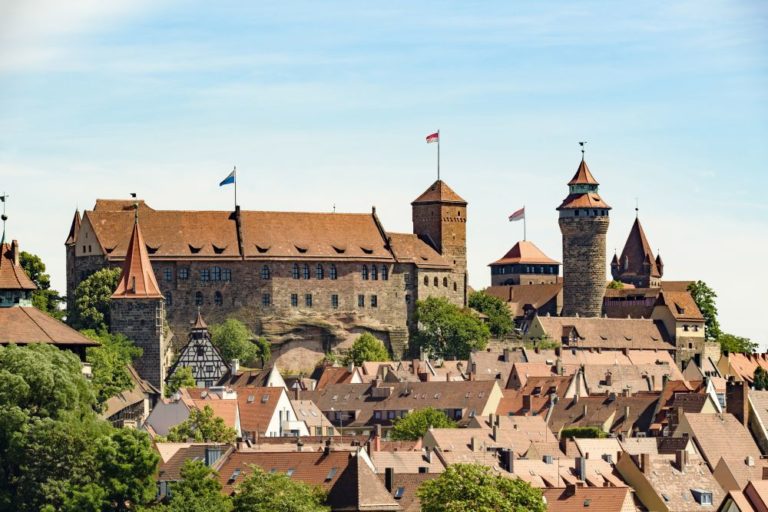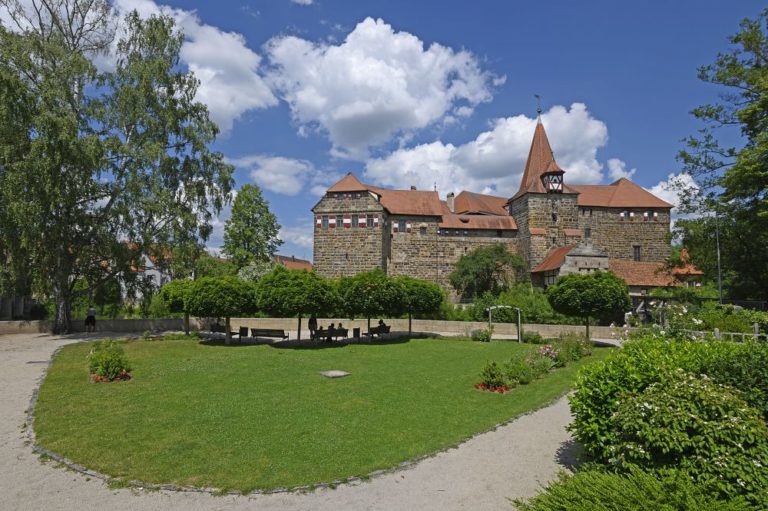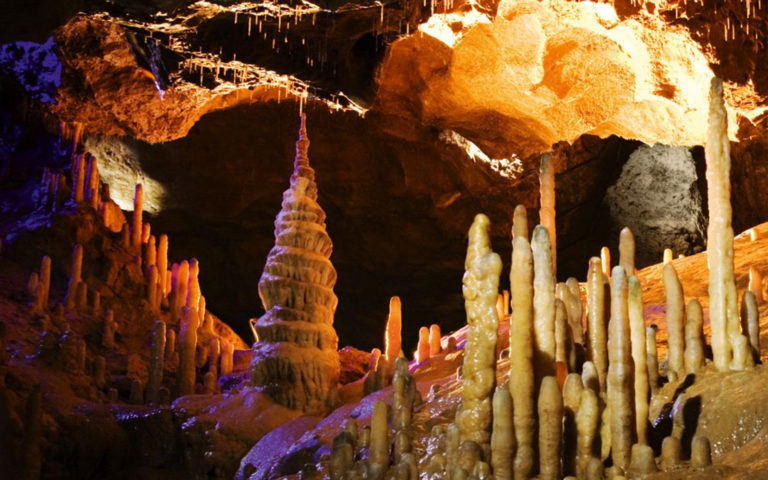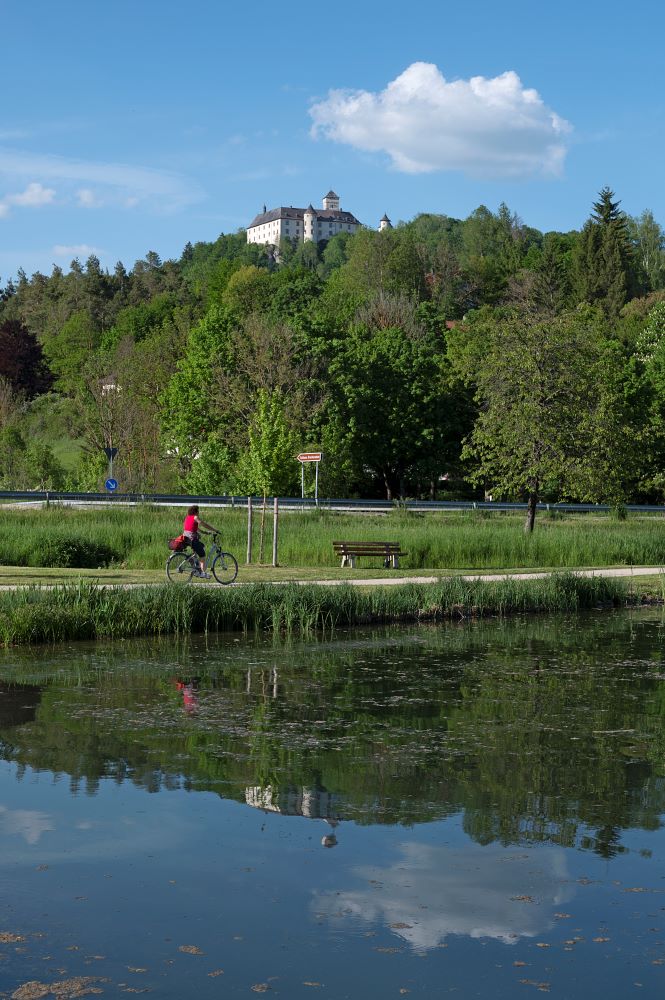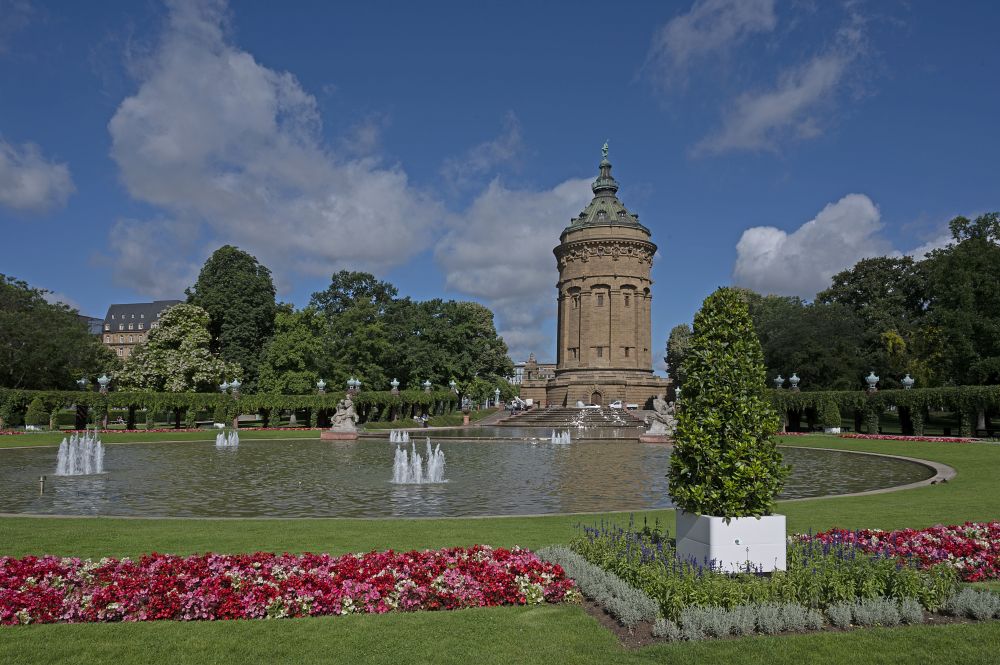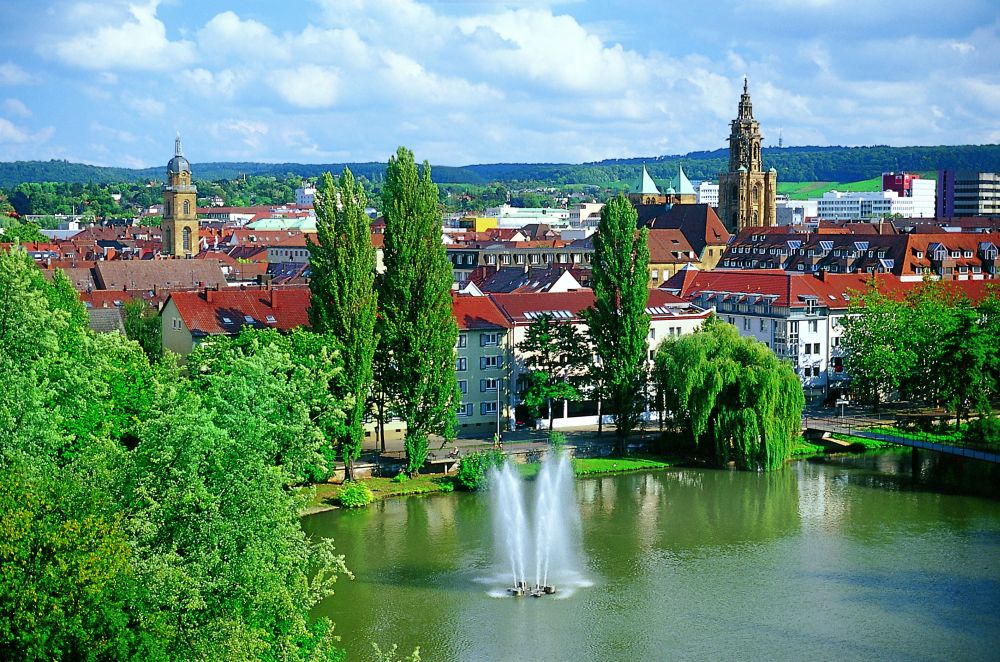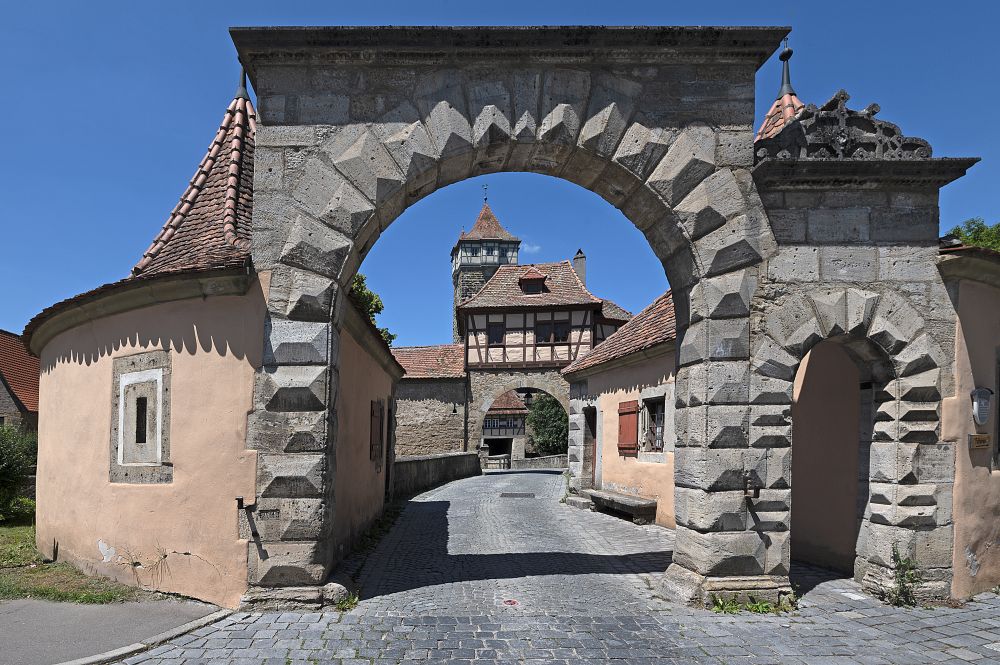



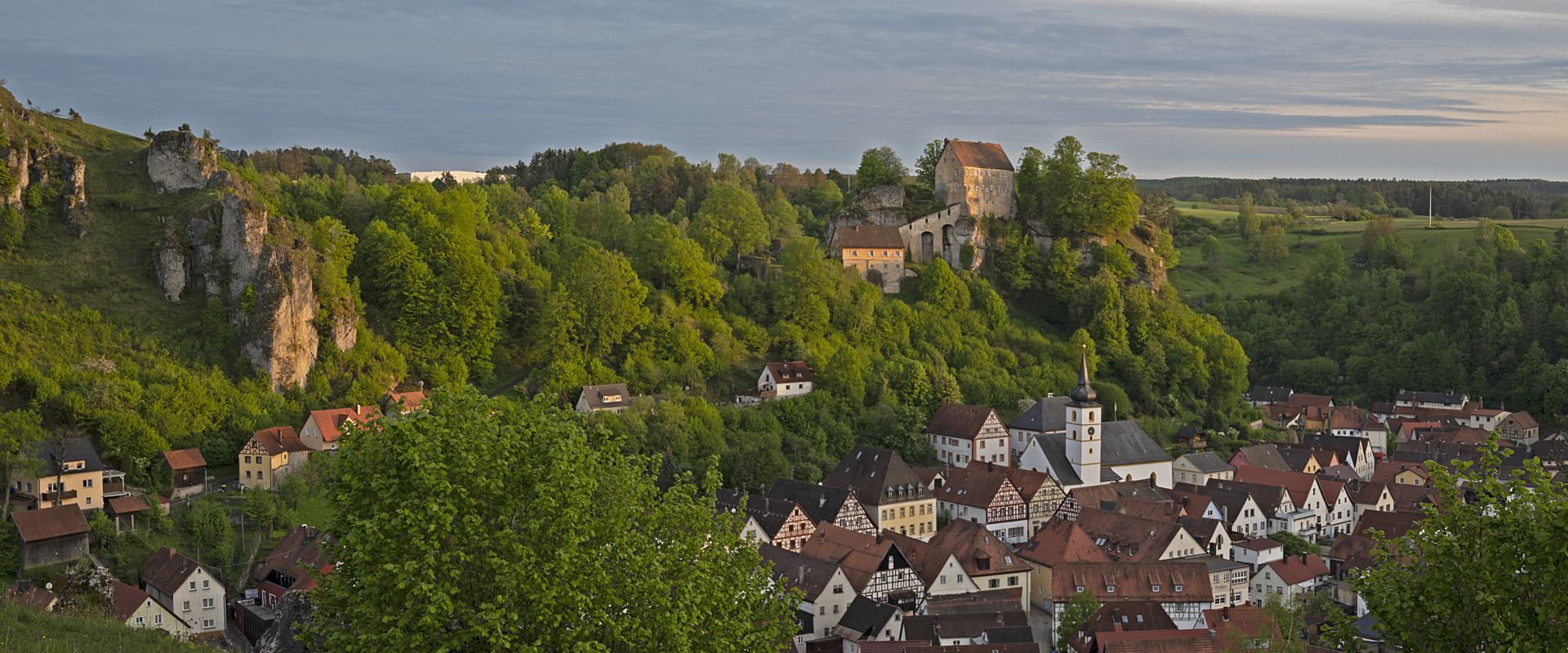
Startseite > Routen > Castle Road -Tour 4
On the road between Nuremberg and Bamberg
This is what awaits you on this route:
- Rocks
- Caves
- World Heritage Site
Look forward to:
What could be more representative of the Castle Road than the starting point of the fourth tour, Nuremberg with its Imperial Castle? When visiting the famous landmark, not only the imposing castle complex is worth seeing, but also the permanent exhibition “Kaiser-Reich-Stadt. The Imperial Castle Nuremberg” in the historic rooms of the Imperial Castle. A stroll through the old town, which is still enclosed by a city wall, reveals the entire spectrum of this metropolis of half a million people: historic buildings in harmony with modern architecture, a diverse museum landscape, shopping miles with fancy stores and, at every turn, tasting offers for the famous finger-length bratwursts.
Just a few kilometers from Nuremberg, in Lauf an der Pegnitz, lies another imperial castle. Even today, the heraldic chamber, which is unique in Europe, can be admired here with 112 coats of arms carved and painted in stone. In the pretty medieval old town awaits a colorful range of stores as well as restaurants, cafés and traditional Franconian inns.
The rest of the route describes a loop through Franconian Switzerland, nestled between the Castle Road beacons of Nuremberg, Bamberg and Bayreuth. The first stop is Forchheim with its imperial palace and a town hall that is always transformed into an Advent calendar at Christmas time. The “land of castles, mills and caves” was already wandered through at the end of the 18th century by prominent guests such as the poets Jean Paul, Ludwig Tieck and Ernst Moritz Arndt. “What Switzerland is on a large scale, one finds here on a rejuvenated scale…” reads a hiking guide from 1829 – a sentence that still holds true today. Bizarre rock formations, as if made for the numerous knight’s castles, are characteristic of the landscape. The thousand-year-old Pottenstein Castle, Gößweinstein Castle, Egloffstein Castle and Rabenstein Castle, today a charming hotel, are among the prime examples of this daring castle building. Also at a dizzying height are the ruins of Neideck and Streitburg castles, both of which offer a magnificent view of the Wiesent valley. In the case of the former Greifenstein Castle, it was even possible to transform it into a mighty castle that towers over the town of Heiligenstadt.
The Castle Road encounters the lovely side of Franconian Switzerland as it leads through idyllic river valleys and past extensive orchard meadows. Not for nothing is the area known for its noble brandies. Underground worlds of wonder open up when you visit the Devil’s Cave in Pottenstein and the Sophienhöhle in the natural paradise of Burg Rabenstein in Ahorntal, which are both popular excursion destinations and exceptional settings for concerts.
After passing the “record-breaking community” of Aufseß, which is said to have the “highest density of breweries in the world,” and the magnificent Seehof Castle in Memmelsdorf, this tour ends in Bamberg.
The old episcopal and imperial city was ennobled as a UNESCO World Heritage Site in 1993. The Altenburg, situated on the highest of the seven hills, is, along with the cathedral and the Michaelsberg, one of the eye-catchers in the city panorama and the connecting point to the Castle Road.
Look forward to:
What could be more representative of the Castle Road than the starting point of the fourth tour, Nuremberg with its Imperial Castle? When visiting the famous landmark, not only the imposing castle complex is worth seeing, but also the permanent exhibition "Kaiser-Reich-Stadt. The Imperial Castle Nuremberg" in the historic rooms of the Imperial Castle. A stroll through the old town, which is still enclosed by a city wall, reveals the entire spectrum of this metropolis of half a million people: historic buildings in harmony with modern architecture, a diverse museum landscape, shopping miles with fancy stores and, at every turn, tasting offers for the famous finger-length bratwursts.
Just a few kilometers from Nuremberg, in Lauf an der Pegnitz, lies another imperial castle. Even today, the heraldic chamber, which is unique in Europe, can be admired here with 112 coats of arms carved and painted in stone. In the pretty medieval old town awaits a colorful range of stores as well as restaurants, cafés and traditional Franconian inns.
The rest of the route describes a loop through Franconian Switzerland, nestled between the Castle Road beacons of Nuremberg, Bamberg and Bayreuth. The first stop is Forchheim with its imperial palace and a town hall that is always transformed into an Advent calendar at Christmas time. The "land of castles, mills and caves" was already wandered through at the end of the 18th century by prominent guests such as the poets Jean Paul, Ludwig Tieck and Ernst Moritz Arndt. "What Switzerland is on a large scale, one finds here on a rejuvenated scale..." reads a hiking guide from 1829 - a sentence that still holds true today. Bizarre rock formations, as if made for the numerous knight's castles, are characteristic of the landscape. The thousand-year-old Pottenstein Castle, Gößweinstein Castle, Egloffstein Castle and Rabenstein Castle, today a charming hotel, are among the prime examples of this daring castle building. Also at a dizzying height are the ruins of Neideck and Streitburg castles, both of which offer a magnificent view of the Wiesent valley. In the case of the former Greifenstein Castle, it was even possible to transform it into a mighty castle that towers over the town of Heiligenstadt.
The Castle Road encounters the lovely side of Franconian Switzerland as it leads through idyllic river valleys and past extensive orchard meadows. Not for nothing is the area known for its noble brandies. Underground worlds of wonder open up when you visit the Devil's Cave in Pottenstein and the Sophienhöhle in the natural paradise of Burg Rabenstein in Ahorntal, which are both popular excursion destinations and exceptional settings for concerts.
After passing the "record-breaking community" of Aufseß, which is said to have the "highest density of breweries in the world," and the magnificent Seehof Castle in Memmelsdorf, this tour ends in Bamberg.
The old episcopal and imperial city was ennobled as a UNESCO World Heritage Site in 1993. The Altenburg, situated on the highest of the seven hills, is, along with the cathedral and the Michaelsberg, one of the eye-catchers in the city panorama and the connecting point to the Castle Road.
Places
Along the Burgenstraße there are RV parks of different equipment – from simple pitches to RV parks. The location also varies. Places directly on the river can be found as well as places in the old town or by the lake.
KNAUS Camping Park Nuremberg | RV parks in Nuremberg -am Dutzendteich | RV park parking Pegnitzwiesen Lauf an der Pegnitz | Campsite Franconian Switzerland Pottenstein Tüchersfeld | RV park “Pottenstein” | RV park Heinrichsdamm Bamberg
Worth seeing
On Tour 4 along the Castle Road, numerous castles and palaces as well as other sights line the route. We briefly introduce some of them here:
Imperial Castle Nuremberg
Biking
The “Castle Road” cycle path accompanies the vacation route along its entire length from Mannheim to Bayreuth.
The first section of this fourth stage to Lauf an der Pegnitz is easy to master, as the “Burgenstraße” cycle path never strays far from the river and is correspondingly flat. The rest of the route in the direction of Bamberg is quite challenging: steep climbs await you again and again, especially in Franconian Switzerland, which is crisscrossed by numerous deeply incised river valleys. As a reward, there are further magnificent views over the landscape.
You can ride through Franconian Switzerland via the northern or southern route of the cycle path. It runs on farm roads, paved and partly graveled bike paths, and secondary roads.
Picture gallery
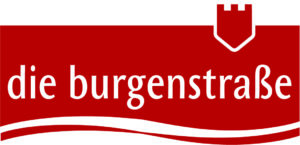
Starting point | Destination:
LENGTH:
Contact details
Due Burgenstraße e.V.
Allee 12
74072 Heilbronn
Tel.: +49 (0) 7131 9735010
Geographical features
The rest of the route describes a loop through Franconian Switzerland, nestled between the Castle Road beacons of Nuremberg, Bamberg and Bayreuth. The first stop is Forchheim with its imperial palace and a town hall that is always transformed into an Advent calendar at Christmas time. The "land of castles, mills and caves" was already wandered through at the end of the 18th century by prominent guests such as the poets Jean Paul, Ludwig Tieck and Ernst Moritz Arndt. "What Switzerland is on a large scale, one finds here on a rejuvenated scale..." reads a hiking guide from 1829 - a sentence that still holds true today. Bizarre rock formations, as if made for the numerous knight's castles, are characteristic of the landscape. The thousand-year-old Pottenstein Castle, Gößweinstein Castle, Egloffstein Castle and Rabenstein Castle, today a charming hotel, are among the prime examples of this daring castle building. Also at a dizzying height are the ruins of Neideck and Streitburg castles, both of which offer a magnificent view of the Wiesent valley. In the case of the former Greifenstein Castle, it was even possible to transform it into a mighty castle that towers over the town of Heiligenstadt.
The Castle Road encounters the lovely side of Franconian Switzerland as it leads through idyllic river valleys and past extensive orchard meadows. Not for nothing is the area known for its noble brandies. Underground worlds of wonder open up when you visit the Devil's Cave in Pottenstein and the Sophienhöhle in the natural paradise of Burg Rabenstein in Ahorntal, which are both popular excursion destinations and exceptional settings for concerts.
After passing the "record-breaking community" of Aufseß, which is said to have the "highest density of breweries in the world," and the magnificent Seehof Castle in Memmelsdorf, this tour ends in Bamberg.
The old episcopal and imperial city was ennobled as a UNESCO World Heritage Site in 1993. The Altenburg, situated on the highest of the seven hills, is, along with the cathedral and the Michaelsberg, one of the eye-catchers in the city panorama and the connecting point to the Castle Road.

